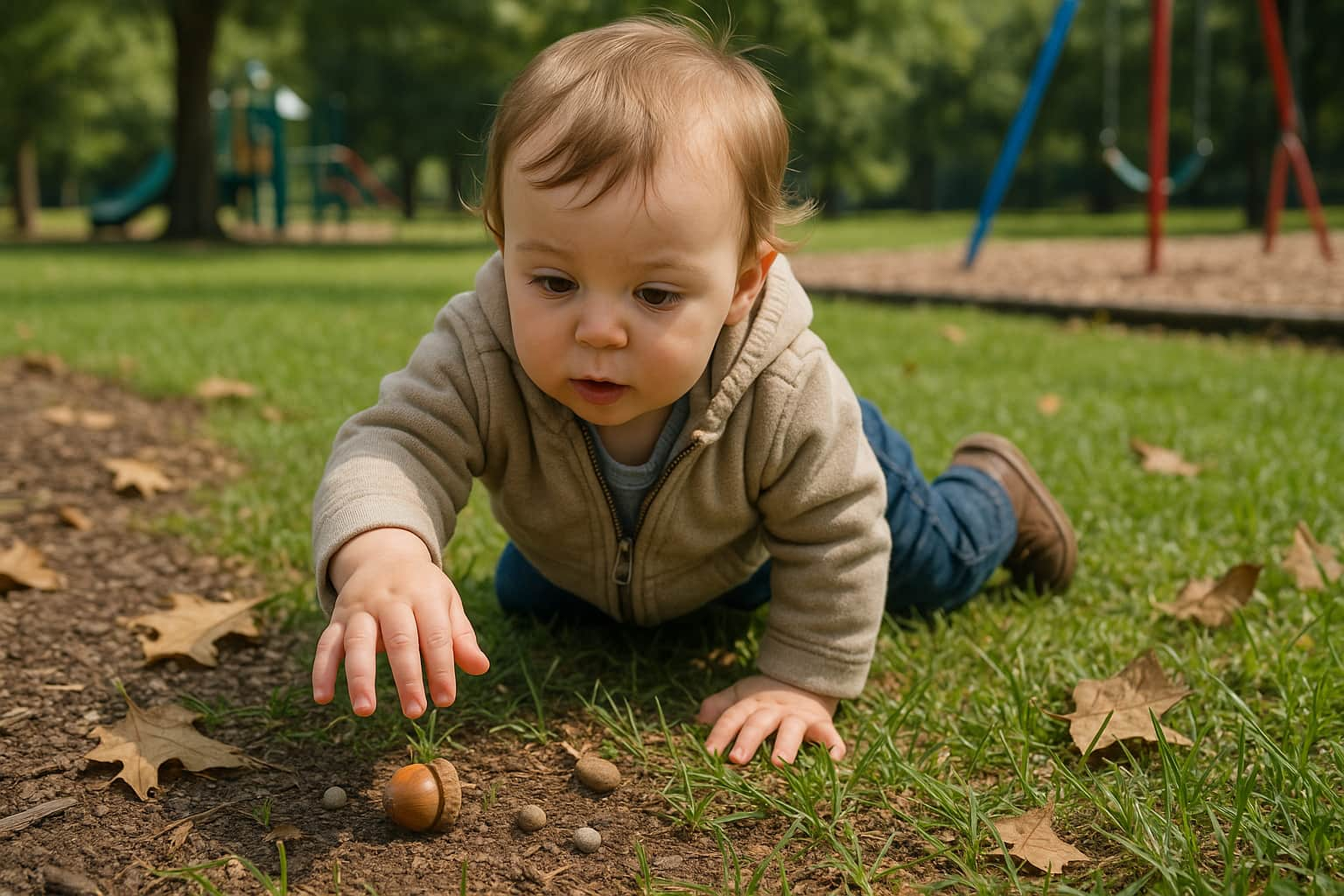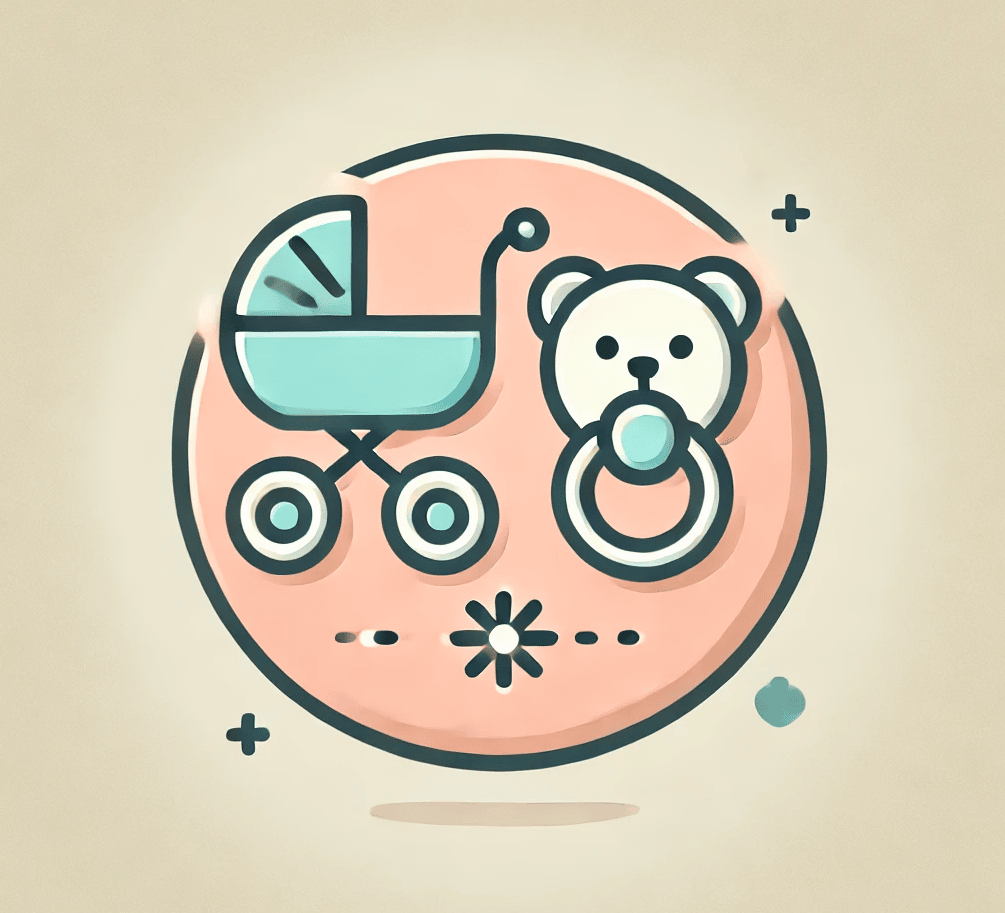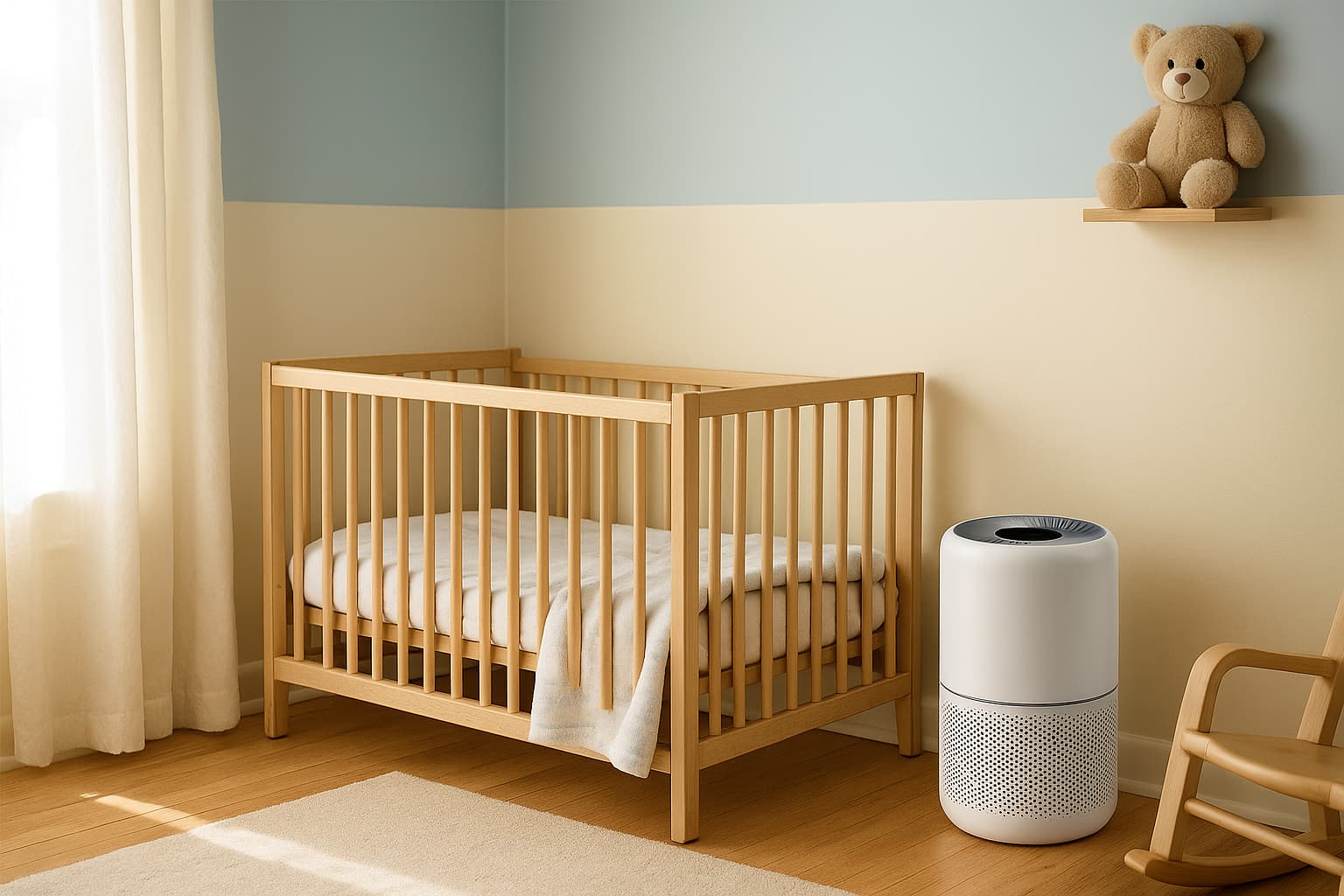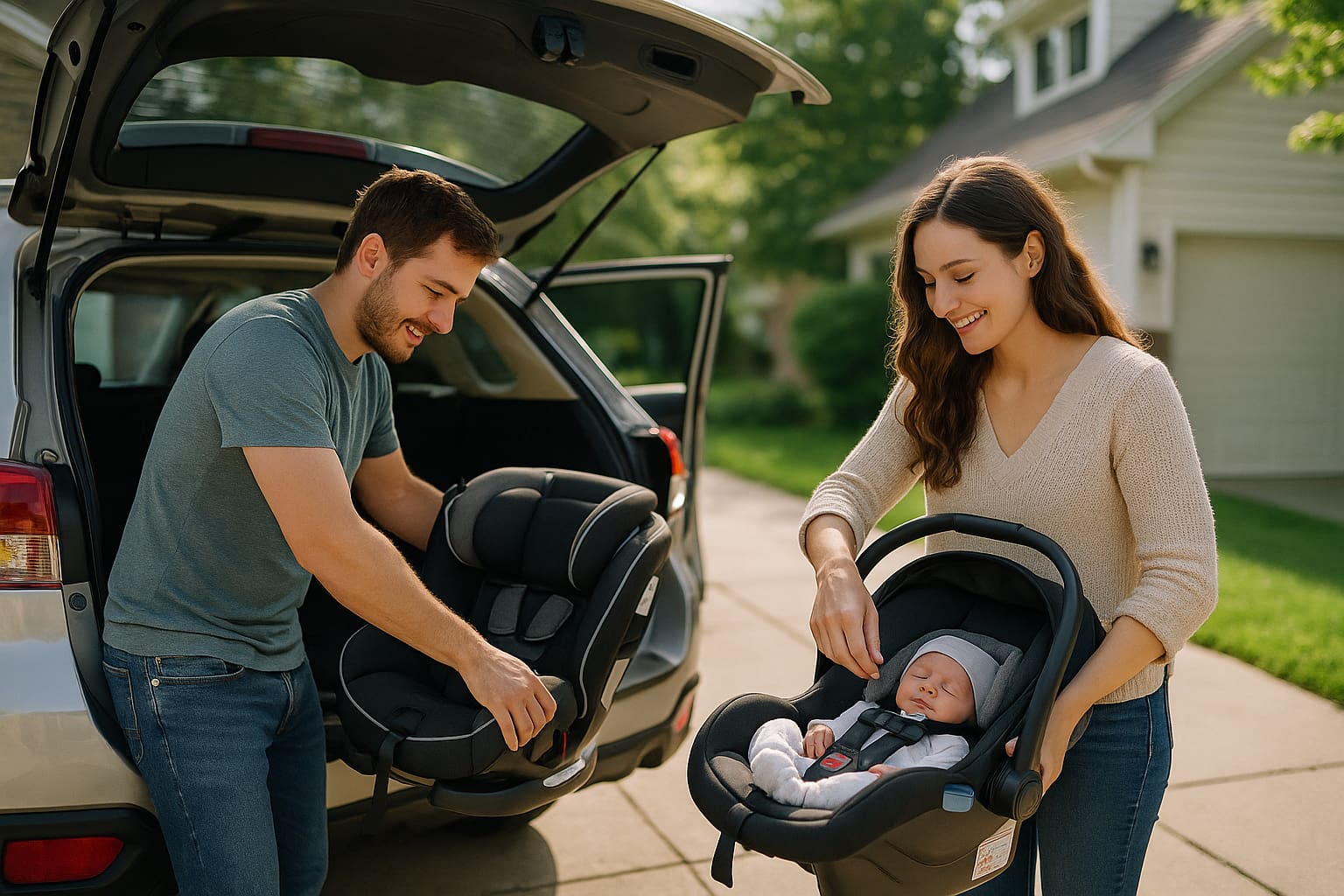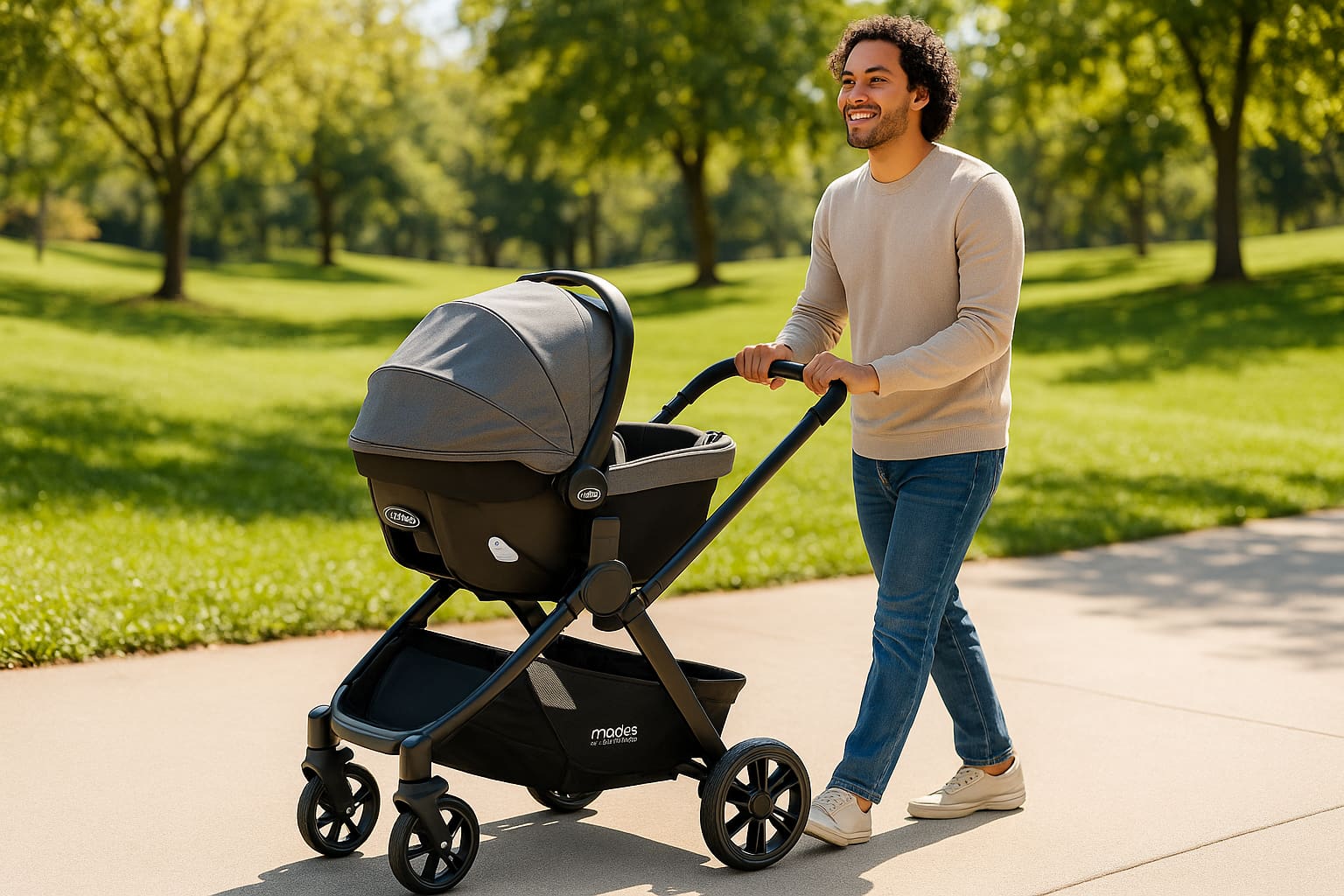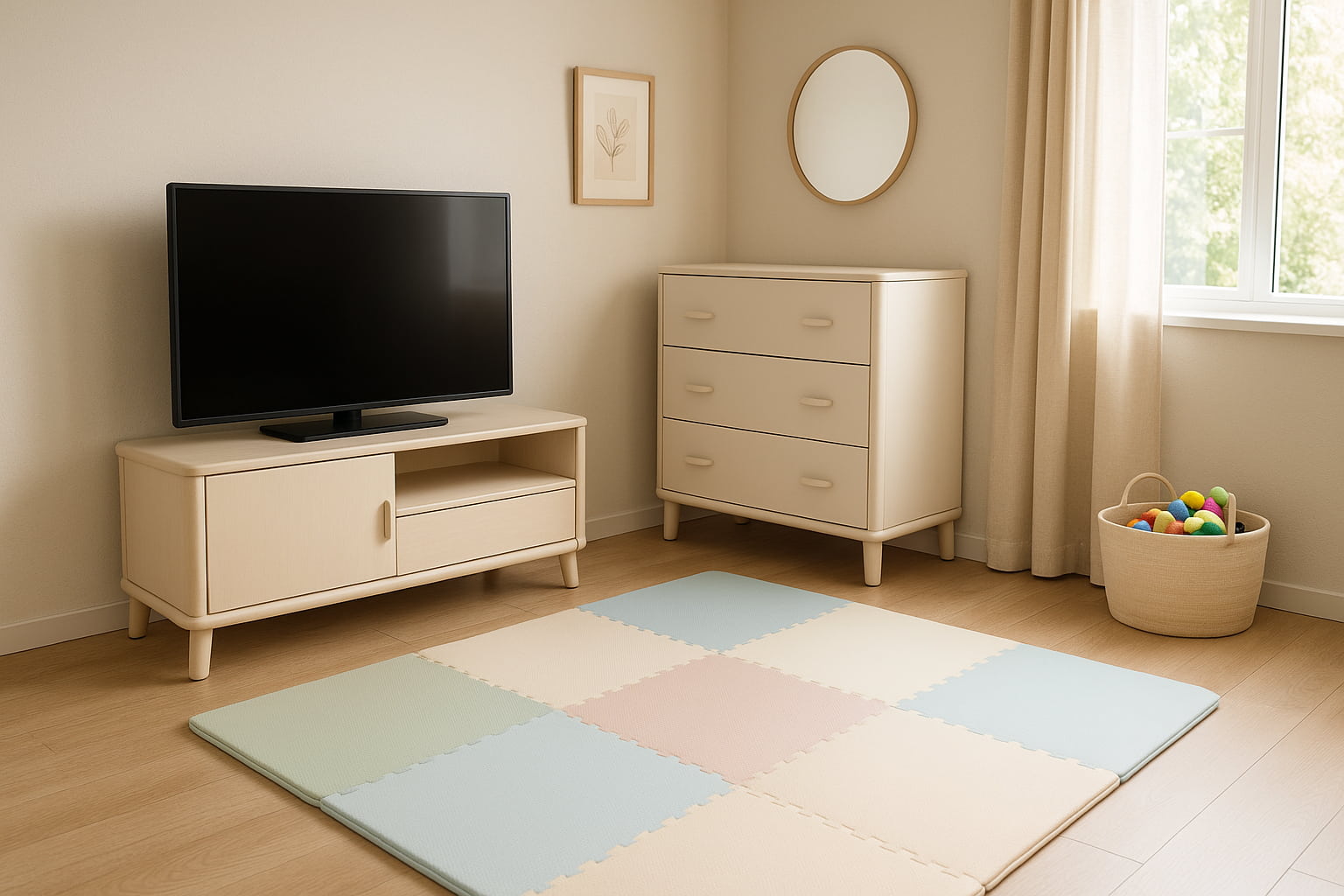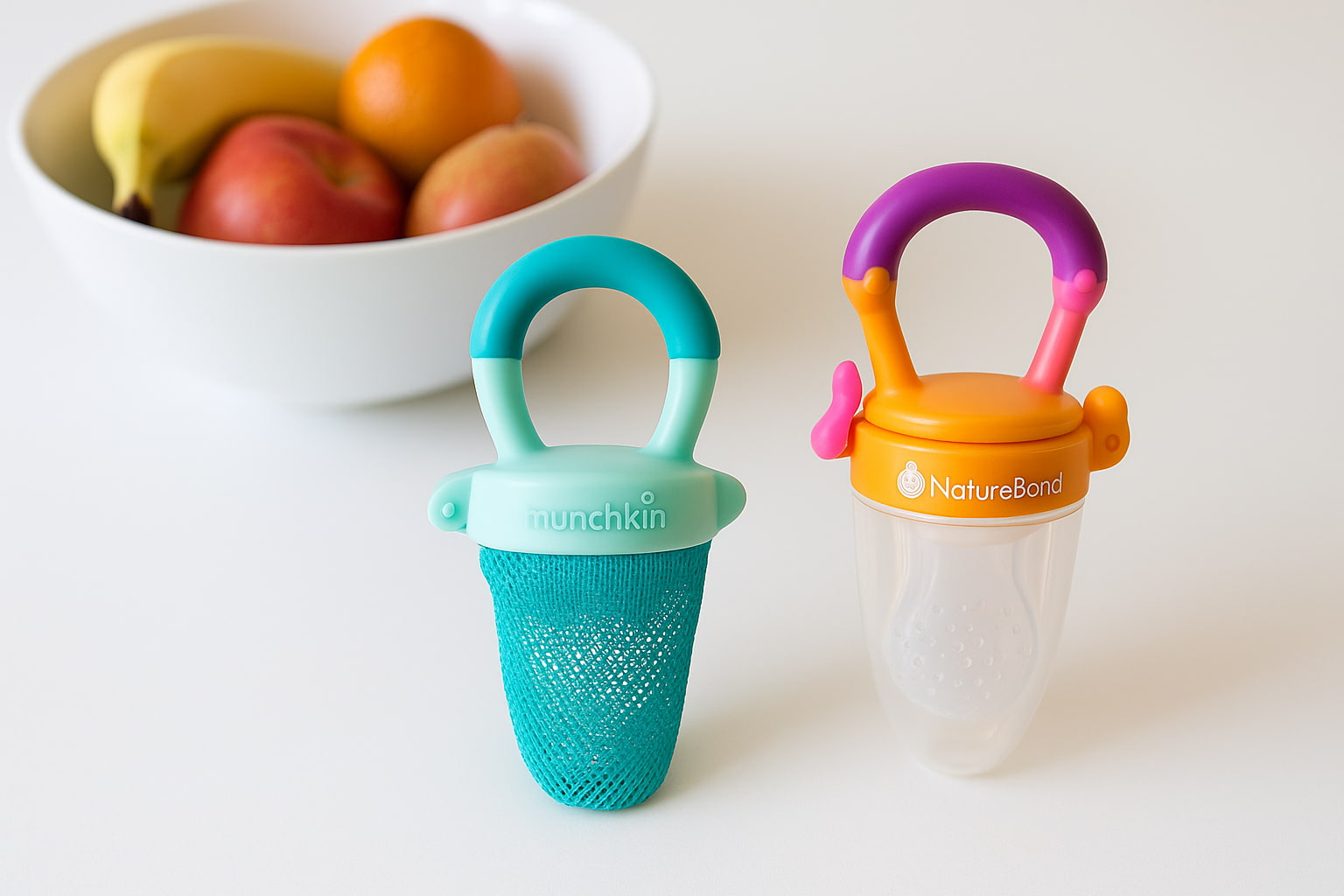Fresh air and sunshine are great for babies. But even the safest-looking park, garden, or playground can hide tiny dangers. Outdoor choking hazards are all around, from rocks and twigs to snack crumbs left behind by others.
Babies and toddlers love to explore. They touch everything. And when they’re curious, things often go straight into their mouths. A simple walk outside can quickly turn risky if you’re not aware of what to watch for.
Many parents think choking only happens indoors, with food or toys. But the truth is, outdoor play areas are full of small objects that can be just as dangerous.
This guide will show you where hidden risks may be and how to handle them. We’ll walk through parks, gardens, and playgrounds, spotting the choking risks you might miss. With a little awareness, you can enjoy outdoor time without fear.
Let’s make every outdoor moment safer for your child.
🌳 Why Outdoor Spaces Can Pose Hidden Choking Risks
Parks and playgrounds feel safe, but they often hide small dangers, especially for babies and toddlers. Unlike your living room, outdoor areas aren’t baby-proofed. That means everyday items like pebbles, acorns, snack wrappers, or plastic bits can become choking hazards fast.
Young children explore with their hands and mouths. They’re curious and fast, making it hard to stop them from grabbing or tasting something unsafe. Sadly, many choking hazards in outdoor spaces look harmless at first glance.
Even playground mulch or sand can hide sharp or tiny objects. And public spaces aren’t cleaned as often as you’d hope.
That’s why supervision matters so much. Knowing what to watch for can help prevent scary moments. The more aware you are, the more freedom your little one can enjoy safely outdoors.
🧸 Common Choking Hazards Found in Parks (Natural items like acorns, gravel, mulch, etc.)
At first glance, parks look safe, but many natural elements can be risky for little ones. Babies and toddlers are low to the ground and love exploring with their mouths. That makes small items like acorns, twigs, pinecones, or gravel dangerous. Even harmless-looking mulch or bark chips used under play structures can become choking hazards if a child tries to chew or swallow them.
Pigeons, squirrels, and wind often leave behind seeds, nutshells, and food crumbs, all small, all tempting to a curious child.
The best protection? Stay alert and scan the ground before your child starts playing. Teach older toddlers what “not to eat” means, even during outdoor time.
👉 Want to reduce indoor risks too? Check out our guide on Baby Feeding Sets that Prevent Choking.
🌼 Choking Dangers Hiding in Home Gardens
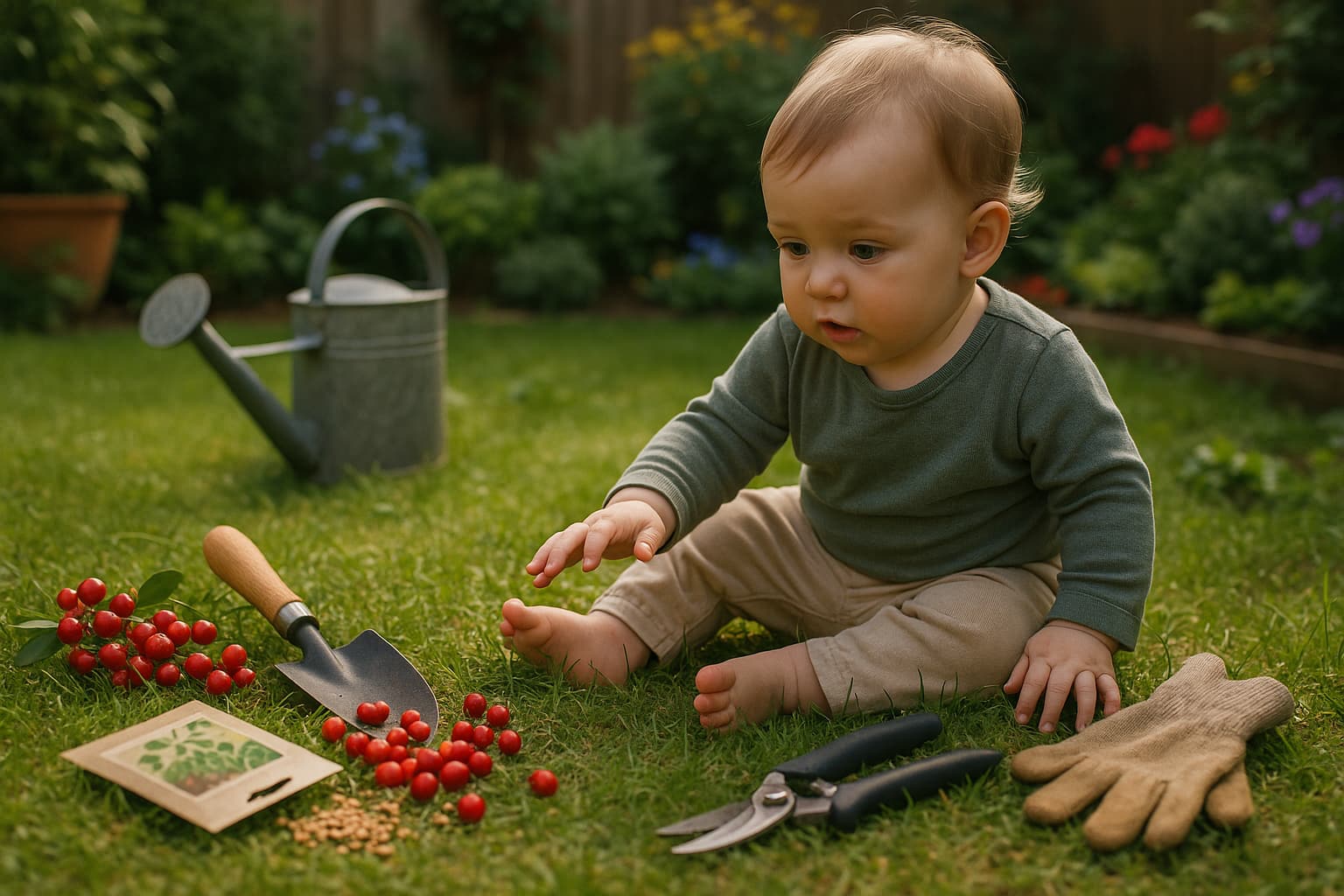
Your home garden might seem like a safe, familiar space, but for babies and toddlers, it’s full of hidden choking risks. Curious little hands often reach for colorful berries, seed pods, or flower petals. While some may just crumble, others can be toxic or tough enough to block a small airway.
Garden tools left within reach, like seed packets, caps, or small scoops, can quickly end up in a child’s mouth. Even decorative stones or plant tags can become a choking hazard if unsupervised.
It’s important to regularly check your garden area for loose items, especially after windy weather. Teach toddlers that the garden is for looking, not tasting, and always keep tools and fertilizers safely stored away. Prevention is key in outdoor spaces you think are safest.
🏀 Playgrounds and Toy Pieces: Easy to Miss, Hard to Swallow
Public playgrounds are full of fun, but also full of small parts that can become choking hazards in seconds. Many playground toys and ride-ons have detachable pieces, broken parts, or exposed bolts that tiny hands can easily remove. These pieces may seem harmless, but they are often just the right size to block a child’s airway.
Small items like loose ball valves, toy caps, or broken plastic can go unnoticed. These often come from ride-on toys or older play equipment. But for babies and toddlers exploring with their mouths, these fragments pose serious risks.
Check the play area for signs of wear and tear before letting your child explore. Supervise closely, especially when other children bring toys with small or removable parts. Staying alert turns playtime into safe time.
👀 How to Spot a Choking Hazard Outdoors
Babies and toddlers explore the world by touching, crawling, and putting things in their mouths. That’s why spotting outdoor choking hazards early is key. You might not always see the danger at first glance, but your child’s behavior offers important clues.
Watch closely if your little one is crawling near gravel, bark, or garden beds. If they’re reaching for tiny items or mouthing objects, it’s time to step in. Curiosity is normal, but even a pebble or plastic cap can turn risky fast.
Staying alert and knowing what to look for can prevent scary situations. It’s all about seeing the world from your child’s level.
👉 Curious about choosing spoons that help with self-feeding? Read our Comparison of Munchkin vs NumNum spoons.
🚫 What NOT to Let Your Toddler Put in Their Mouth Outside
When toddlers explore outside, almost everything looks like a toy, or worse, a snack. But some outdoor items can be especially dangerous if swallowed, even in small amounts. It’s important to know what should never go near your toddler’s mouth.
Watch out for cigarette butts, plastic wrappers, and metal bottle caps. These small items can choke a toddler and may also carry harmful germs or toxins. Fallen berries or mushrooms might seem harmless, but they can be poisonous. Even flowers and garden leaves could cause allergic reactions or digestive trouble if chewed.
Your best defense? A watchful eye and gentle redirection. Teaching your child “not everything goes in the mouth” is one of the simplest but most powerful safety habits you can build together.
🌟 Did You Know?
According to the U.S. Consumer Product Safety Commission (CPSC), choking on small parts remains a leading cause of injury and death in young children. Many of these incidents occur outdoors due to small objects like toy pieces, stones, or plastic caps left in play areas.
👣 Safety Habits to Teach Toddlers While Playing Outside
Toddlers are naturally curious, and outdoor play is one of the best ways for them to grow and learn. But without a few basic safety habits, that curiosity can lead to dangerous situations, especially when it comes to choking risks. Parents and caregivers play a huge role in shaping safe behavior. Teaching simple habits early helps toddlers explore their world with confidence and care.
Try these practical tips every time you head outside:
✅ Always walk your child through “safe” and “not safe” items
✅ Use gentle verbal cues like “That stays on the ground” or “Let’s look, not touch”
✅ Let them explore, but stay within arm’s reach|
✅ Show them how to look before picking anything up
These small habits build lasting awareness, and they make outdoor play safer for everyone.
👜 What Parents Should Carry to Handle Outdoor Choking Risks
Small CPR guide, baby wipes, small flashlight, first-aid
When you’re outdoors with a toddler, being prepared can make all the difference during an unexpected choking emergency. A few simple items tucked into your diaper bag or backpack can save precious seconds. You don’t need a full first-aid kit, just the essentials that help you respond quickly and calmly.
Here’s what to always pack for peace of mind:
✅ A pocket-sized CPR steps card (especially for infant choking)
✅ Baby wipes for fast cleanup of dropped or unsafe items
✅ Small flashlight to check inside the mouth or under playground gear
✅ Mini first-aid pouch with gloves and tweezers
👉 Wondering how to safely feed your baby outside? Explore our Top-rated Baby Feeding Sets that Prevent Choking.
🏕️ Traveling or Camping? These Outdoor Choking Risks Are Often Overlooked
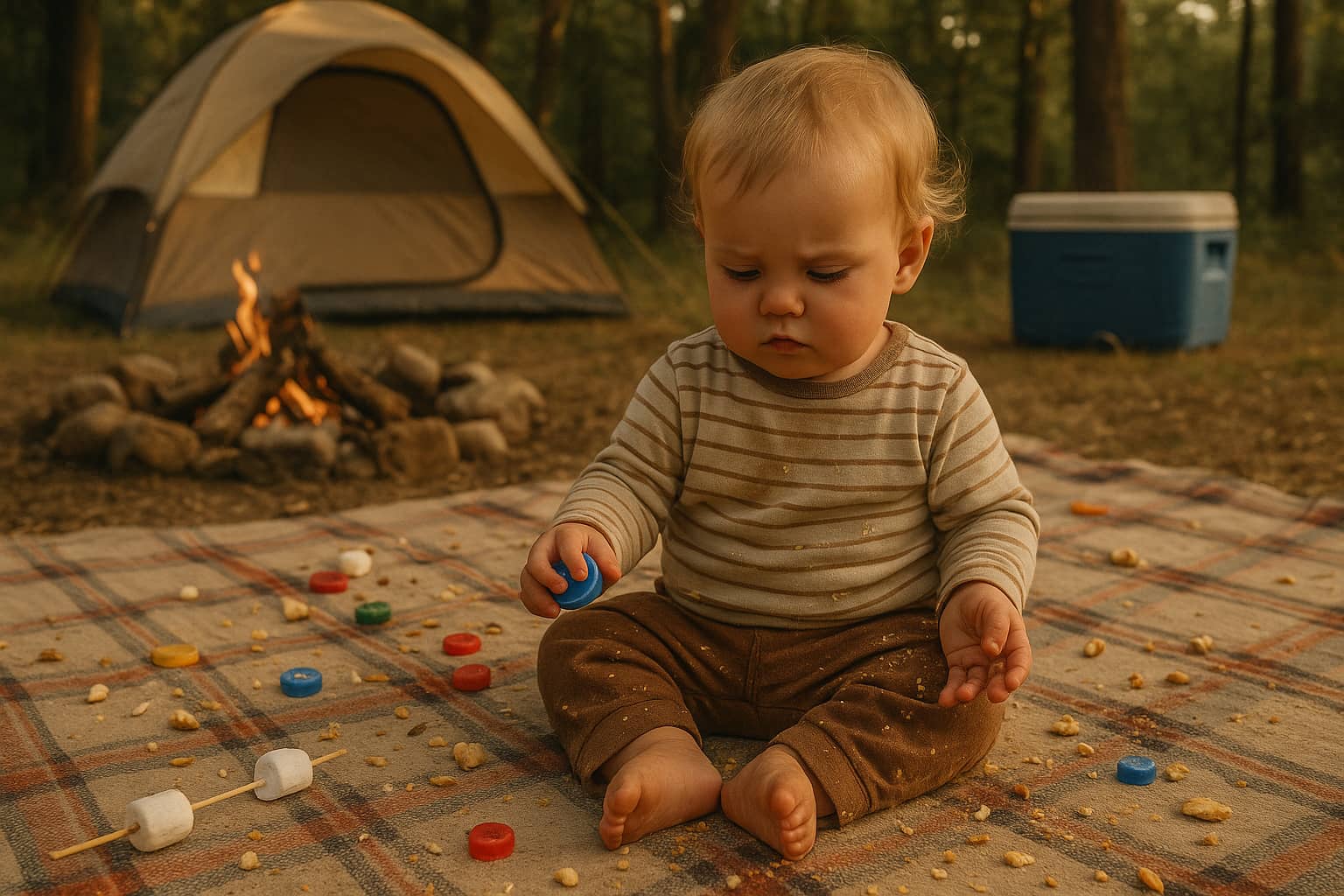
Focus on pebbles, bottle caps, campfire food bits, and trash
When you’re out camping or traveling with your toddler, everything seems like an adventure, especially to your little one. But outdoor fun comes with hidden risks. In nature, choking hazards can blend right in.
Tiny rocks or pebbles near tents, sharp bottle caps on picnic tables, or even leftover food scraps near the firepit can be dangerous. Toddlers explore with their hands and mouths. That means anything small, shiny, or new might go straight in.
Keep an eye out while setting up your space. Before your child starts playing, take a moment to scan the area.
Watch for these common hazards:
✔ Pebbles and gravel paths
✔ Plastic bottle caps or wrappers
✔ Burned marshmallows or food bits
✔ Bits of trash hidden in tall grass
Staying alert during travel playtime keeps your toddler safe while they explore.
📸 How to Babyproof Outdoor Spaces at Home (Checklist Style)
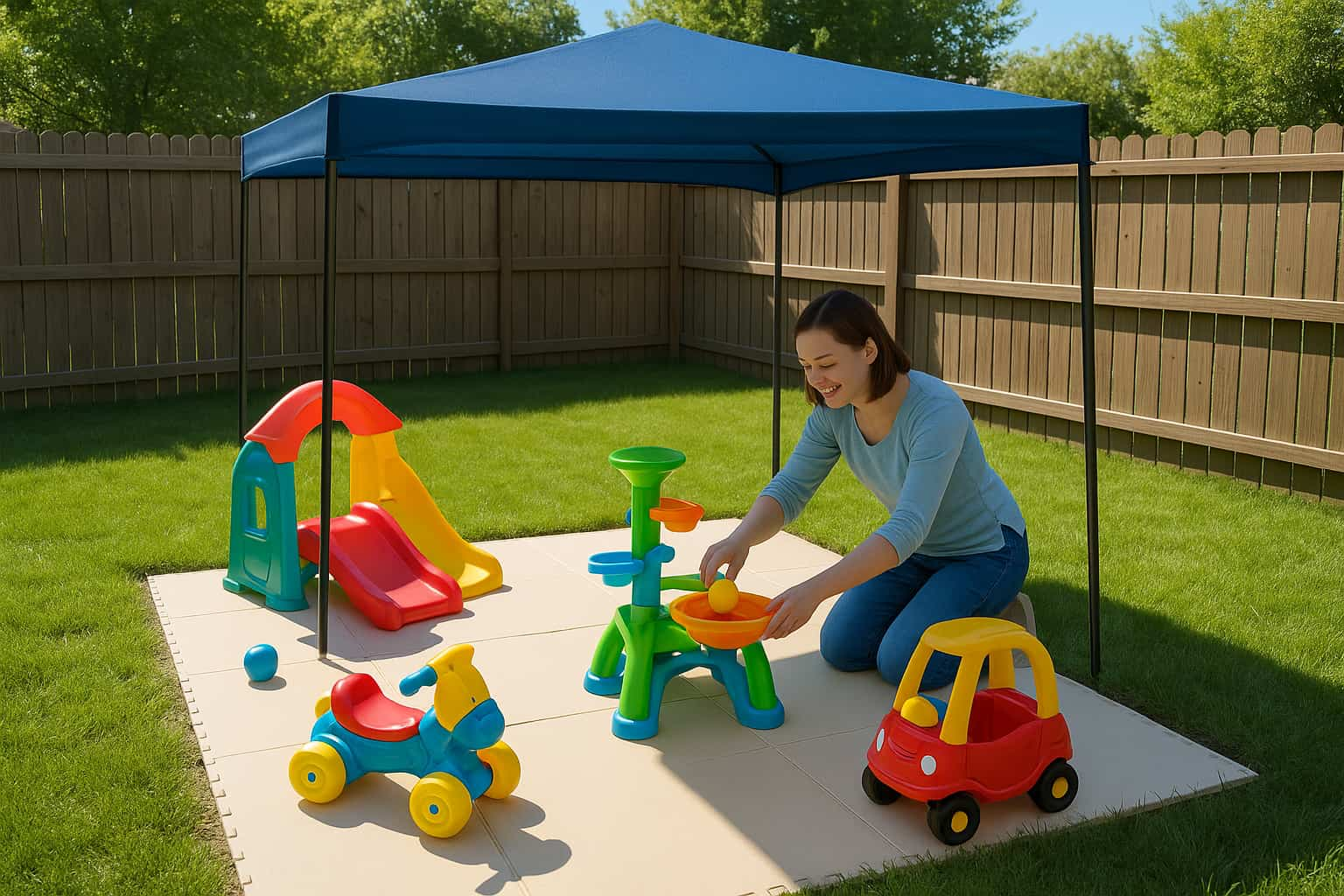
Fencing, mulch alternatives, supervised areas, and secure toys
Your backyard may seem safe, but to a curious toddler, it can still hide choking dangers. Babyproofing your outdoor space helps prevent accidents before they happen. Simple changes can make a big difference.
From replacing unsafe mulch to checking toys for loose parts, these small steps keep playtime safer. Supervision is key, but setup matters too.
Use this outdoor safety checklist:
🔒 Install secure fencing with locked gates
🌱 Swap wood mulch for rubber or grass mats
🧸 Check all outdoor toys for broken or loose parts
👀 Keep play zones close to seating areas for supervision
🪑 Remove tiny decor pieces or lawn items toddlers may grab
🧽 Clean outdoor surfaces where toddlers crawl or sit
Babyproofing your yard gives your child freedom to explore safely, right at home.
🧠 Final Verdict: Awareness Is the First Step Toward Prevention
Encourage proactive habits and regular safety checks
Choking risks aren’t just inside the home; they’re everywhere your toddler explores. From playground mulch to tiny toy parts in the garden, outdoor spaces can hide serious hazards in plain sight. But here’s the good news: awareness changes everything.
When you know what to look for, prevention becomes part of your daily routine. Whether you’re packing your park bag, scanning the backyard, or setting up a picnic, a little planning helps keep your child safe.
You don’t need to panic, just prepare.
Regular checks, babyproofing, and teaching your child a few simple safety habits can go a long way.
Keep an eye out. Stay calm. Be ready.
Because when you’re informed, you’re empowered. And when you’re empowered, your little one has the freedom to explore, learn, and grow safely.
Trust your instincts. Stay involved.
And remember: safety starts with simple steps taken every day.
Disclaimer:
This article is for informational purposes only and does not replace professional medical advice or certified emergency training. Always consult with a pediatrician or certified CPR instructor when in doubt about your child’s safety.
Writer Byline:
Written by: Our Team of Child Safety Writers
